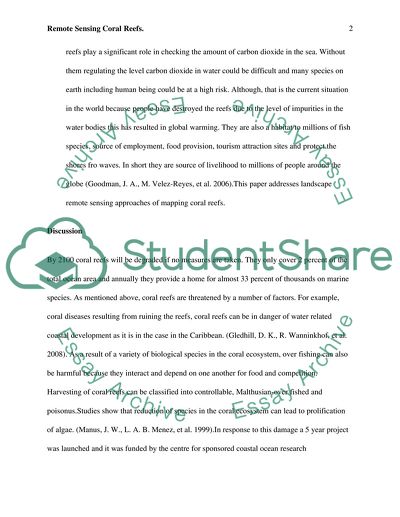Cite this document
(“Remote Sensing of the Coral Reefs Coursework Example | Topics and Well Written Essays - 3000 words”, n.d.)
Remote Sensing of the Coral Reefs Coursework Example | Topics and Well Written Essays - 3000 words. Retrieved from https://studentshare.org/environmental-studies/1721646-landscape-ecological-approaches-to-countryside-management-my-topic-remote-sensing-coral-reef
Remote Sensing of the Coral Reefs Coursework Example | Topics and Well Written Essays - 3000 words. Retrieved from https://studentshare.org/environmental-studies/1721646-landscape-ecological-approaches-to-countryside-management-my-topic-remote-sensing-coral-reef
(Remote Sensing of the Coral Reefs Coursework Example | Topics and Well Written Essays - 3000 Words)
Remote Sensing of the Coral Reefs Coursework Example | Topics and Well Written Essays - 3000 Words. https://studentshare.org/environmental-studies/1721646-landscape-ecological-approaches-to-countryside-management-my-topic-remote-sensing-coral-reef.
Remote Sensing of the Coral Reefs Coursework Example | Topics and Well Written Essays - 3000 Words. https://studentshare.org/environmental-studies/1721646-landscape-ecological-approaches-to-countryside-management-my-topic-remote-sensing-coral-reef.
“Remote Sensing of the Coral Reefs Coursework Example | Topics and Well Written Essays - 3000 Words”, n.d. https://studentshare.org/environmental-studies/1721646-landscape-ecological-approaches-to-countryside-management-my-topic-remote-sensing-coral-reef.


